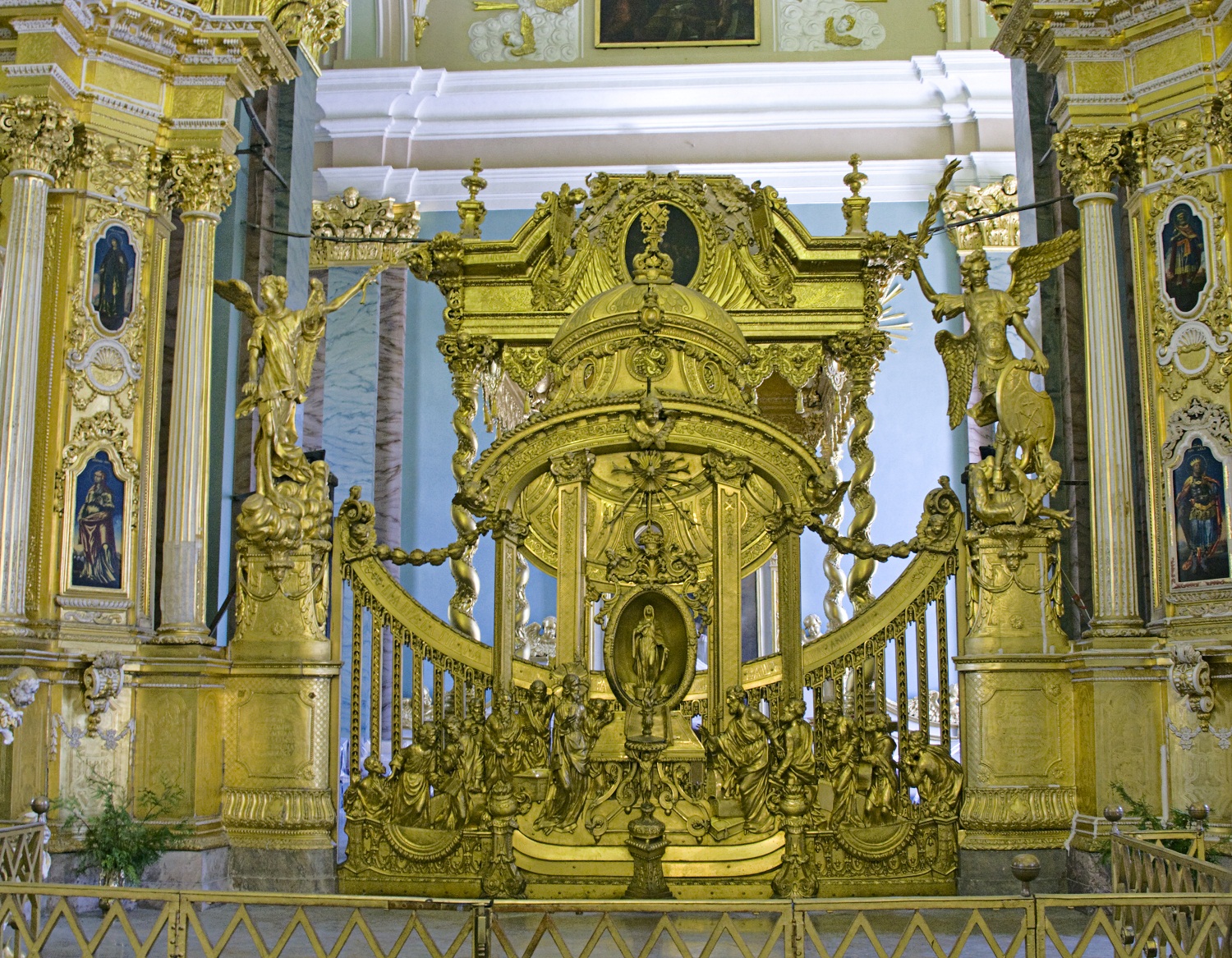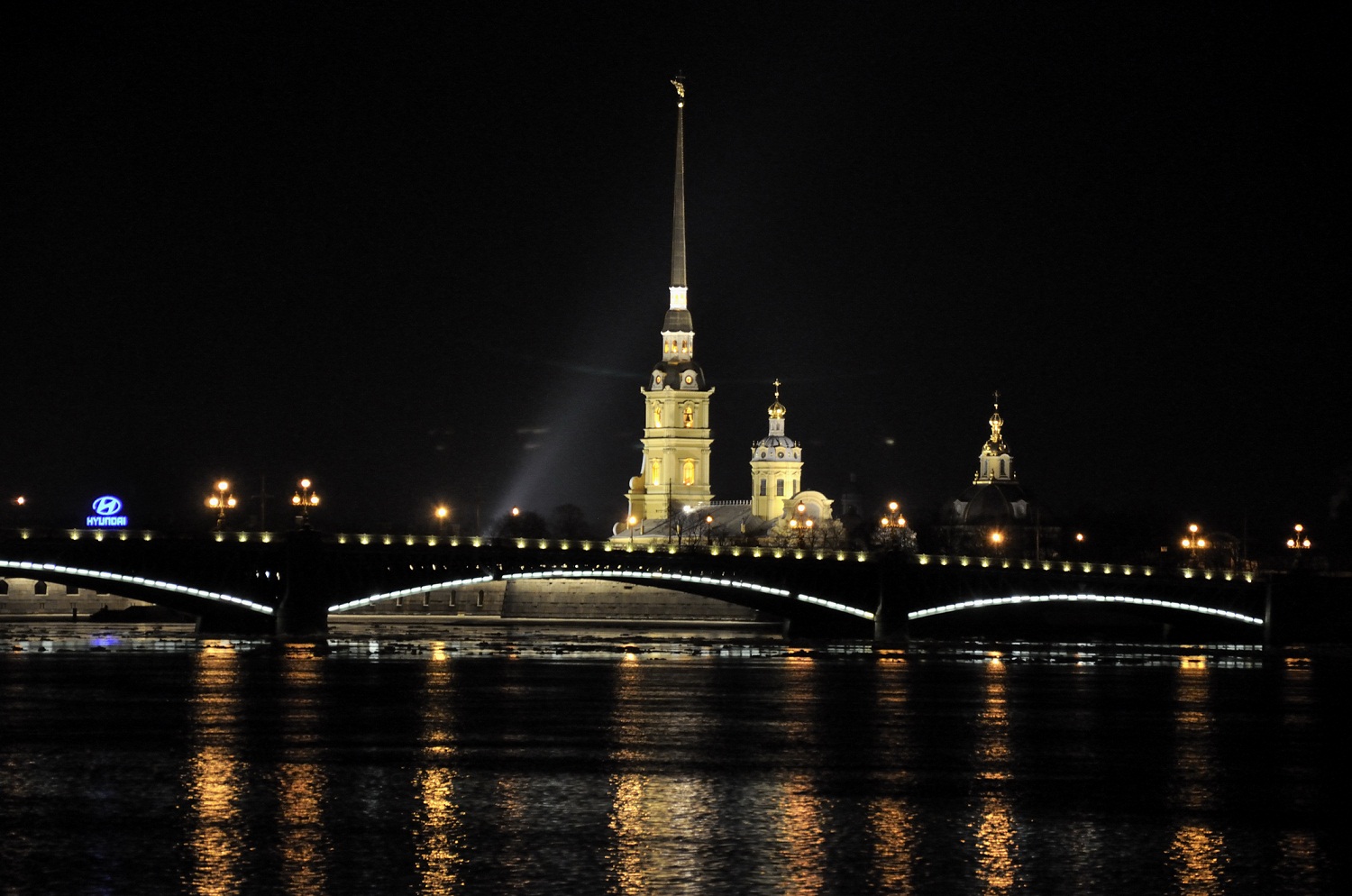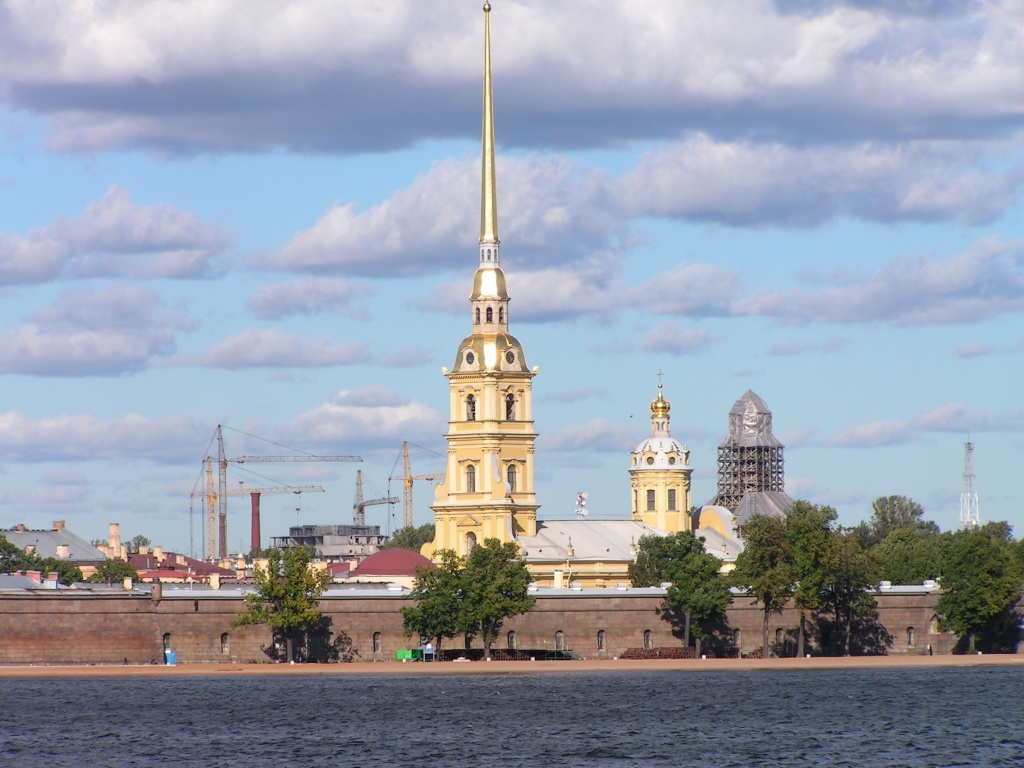The Peter and Paul Cathedral (Russian: Петропавловский собор) is a Russian Orthodox cathedral located inside the Peter and Paul Fortress in St. Petersburg, Russia. It is the first and oldest landmark in St. Petersburg, built between 1712 and 1733 on Zayachy Islandalong the Neva River. Both the cathedral and the fortress were originally built under Peter the Great and designed by Domenico Trezzini. The cathedral's bell tower is the world's tallest Orthodox bell tower. Since the belfry is not standalone, but an integral part of the main building, the cathedral is sometimes considered the highest Orthodox Church in the world. There is another Cathedral of Saints Peter and Paul Church in St. Petersburg, located in Petergof.
The current building, the first stone church in St. Petersburg, was designed by Trezzini and built between 1712 and 1733. Its golden spire reaches a height of 123 metres (404 ft) and features at its top an angel holding a cross. This angel is one of the most important symbols of St. Petersburg.
The cathedral's architecture also features a unique iconostasis (the screen which separates the nave of the church from the sanctuary). In the Eastern Orthodox Church the iconostasis is normally a flat wall or screen with three doors through it, the central Holy Doors used only for very solemn entrances, and the two side doors, by which the clergy and others enter and leave the sanctuary. However, at St. Peter and Paul, the iconostasis rises to form a sort of tower over the sanctuary.
The cathedral has a typical Flemish carillon, a gift of the Flemish city of Mechelen, Flanders.
The cathedral is dedicated to Saints Peter and Paul, the patron saints of the fortress (Saint Peter being the patron saint of the city). The current cathedral is the second one on the site. The first, built soon after Peter's founding of the city, was consecrated by Archbishop Iov of Novgorod the Great in April 1704.
The cathedral was the cathedral church (i.e., the seat of the bishop; the term cathedral—sobor (собор) in Russian—can mean the seat of a bishop, but it can also mean simply a large or important church) of the city until 1859 (when St Isaacs became the city's cathedral.) The current cathedral church of St. Petersburg is the Kazan Cathedral on Nevsky Prospect.
The cathedral was closed in 1919 and turned into a museum in 1924. It is still officially a museum; religious services, however, resumed in 2000.












